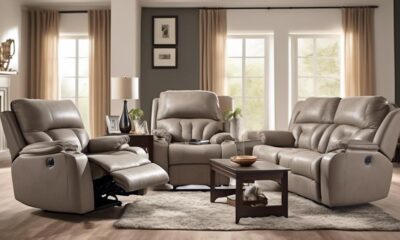Architecture Home Styles
10 Surprising Reasons People Keep Their Houses Dark
Yearning for a deeper understanding of why some choose shadows over light in their homes? Discover the unexpected motivations behind this intriguing preference.

Have you ever wondered why some people prefer to live in what seems like perpetual twilight within their homes? It's a curious phenomenon that sparks intrigue and prompts us to ponder the unexpected motivations behind this choice.
As we explore the multifaceted reasons individuals keep their living spaces dimly lit, we uncover a myriad of surprising factors that go beyond mere lighting preferences. From psychological comfort to unexpected health benefits, the desire for darker surroundings reveals a complex interplay of personal inclinations and practical considerations that might just change your perspective on this seemingly simple decision.
Key Takeaways
- Dark rooms foster psychological comfort and tranquility amidst chaos and overstimulation.
- Opting for natural light in dark spaces conserves energy and reduces electricity bills.
- Dark interiors provide privacy, security, and solace for those seeking refuge from unwanted eyes.
- Creating a stylish and inviting atmosphere, dark color schemes enhance aesthetics and promote better sleep quality.
Psychological Comfort
Amidst the hustle and bustle of modern life, many individuals find solace and tranquility in the embrace of dark spaces, seeking emotional comfort and a retreat from the relentless demands of the outside world. When we keep the blinds open, allowing just a hint of natural light to filter through, we create a cozy sanctuary where we can truly unwind. By incorporating natural materials like wood and stone into our dark interiors, we connect with the earth's grounding energy, fostering a sense of peace within ourselves.
Being able to see without the harsh glare of artificial lights can be a liberating experience, allowing us to relax and rejuvenate. The subtle play of light and shadows in a dark room creates a soothing atmosphere that promotes psychological comfort. It's in these moments of gentle darkness that we find a refuge from the overstimulation of the day, embracing a more serene state of mind. Dark spaces offer a canvas for our thoughts to wander freely, unencumbered by the distractions of a brightly lit world.
Energy Conservation
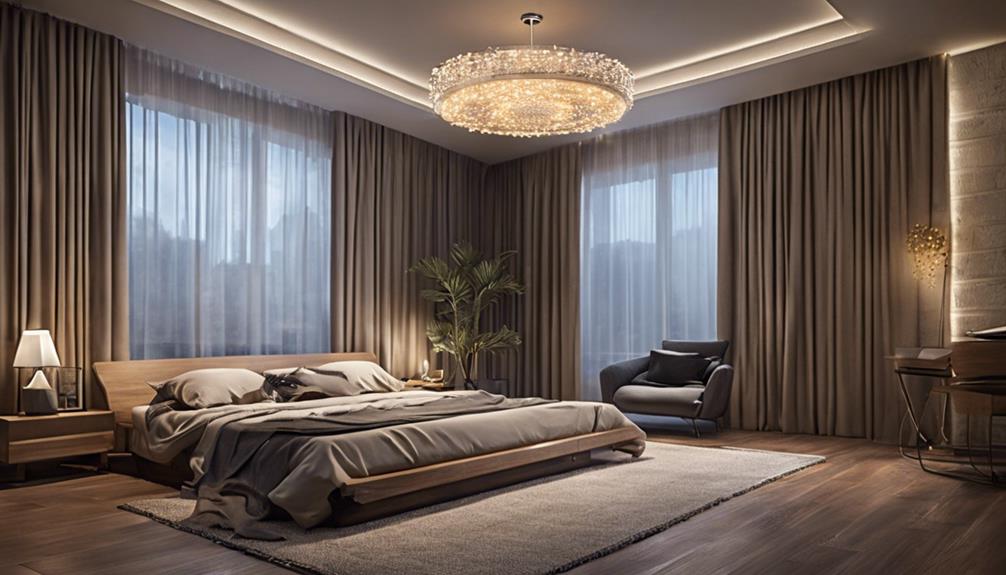
In the realm of household management, a significant motivation for maintaining dimly lit interiors is the emphasis on energy conservation. By reducing lighting usage, we not only lower electricity bills but also decrease our carbon footprint. Here are some key points to consider:
- Using natural light: Opting for natural light during the day instead of relying solely on artificial lighting is a sustainable practice that can significantly reduce energy consumption.
- Opting for energy-efficient lighting: Choosing energy-efficient options like LED bulbs is a smart move for those looking to conserve energy and cut costs in the long run.
- Implementing smart lighting systems: Installing smart lighting systems that adjust brightness based on natural light levels not only enhances convenience but also contributes to energy conservation efforts.
- Keeping curtains drawn: Drawing curtains during the day to let in natural light while minimizing heat gain can help regulate indoor temperatures and reduce the need for artificial lighting.
Privacy Concerns
With a focus on conserving energy through lighting adjustments, the conversation seamlessly shifts to the realm of privacy concerns influencing individuals to keep their houses dark. Fear of break-ins and intrusions can drive us to opt for darker living spaces, seeking that added layer of privacy when we come home. It's not just about energy savings; privacy concerns, such as avoiding peeping Toms or unwanted eyes, play a significant role in our decision to keep curtains drawn and lights low.
For some of us who've endured past traumatic experiences involving privacy violations, darker environments may provide a sense of security and comfort. Balancing the need for natural light with privacy can be achieved by using privacy shears during the day, allowing us to control the level of exposure while maintaining our desired sense of seclusion.
Ultimately, personal preference for privacy is a compelling factor in choosing to live in darker settings, where we feel safe and shielded from external intrusions.
Aesthetic Appeal
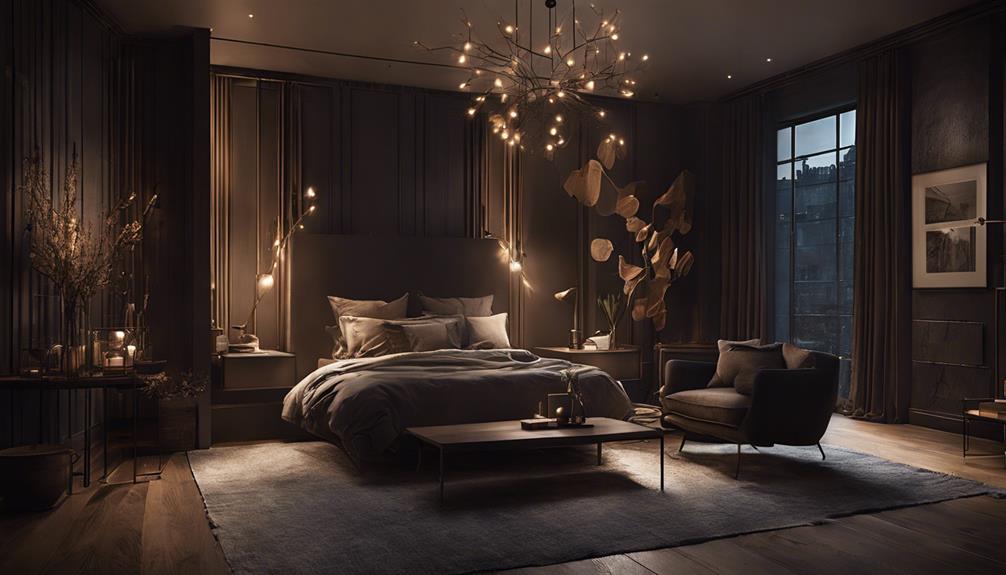
Exploring the captivating allure of dark interiors reveals a realm where visual aesthetics intertwine with a sense of cozy sophistication and elegance. Dark rooms possess an undeniable charm that goes beyond mere color schemes; they offer a canvas for creativity and individuality. Here's why dark interiors can be so appealing:
- Dramatic Contrast: Dark color schemes allow for striking contrasts when paired with light accents, creating a visually dynamic atmosphere that captivates the eye.
- Sophisticated Elegance: The use of dark hues can evoke a feeling of luxury and refinement, elevating the overall ambiance of a space.
- Cozy Atmosphere: Dark rooms have a unique ability to create a warm and inviting atmosphere, perfect for unwinding after a long day.
- Enhanced Architectural Features: By playing with light and shadow, dark interiors can accentuate specific architectural elements, adding depth and character to a room.
Incorporating these elements into interior design can transform a space into a haven of style and sophistication, appealing to those who seek liberation through unique and aesthetically pleasing environments.
Better Sleep Quality
Delving into the realm of dark interiors unveils a key element crucial for enhancing sleep quality: the absence of bright light. Exposure to bright light before bedtime can disrupt our body's natural sleep-wake cycle, impacting the production of melatonin, which is essential for quality sleep. By creating a dark environment, we signal our brains to produce melatonin, helping us fall asleep faster and enjoy a more restful slumber.
Blocking out light sources in the bedroom can promote deeper sleep, leading to better overall sleep quality and duration. Studies have shown that dark rooms can significantly improve our sleep quality, allowing us to wake up feeling more refreshed and rejuvenated. Whether it's investing in blackout curtains, switching off bright overhead lights, or simply embracing the tranquility of darkness, prioritizing a dark environment can be a game-changer for those seeking liberation from restless nights and aiming for a peaceful slumber.
Protecting Artwork

We all know how sunlight can be a double-edged sword when it comes to preserving our beloved artwork. Those vibrant colors we cherish can fade away in the harsh light.
Artwork Light Sensitivity
To safeguard delicate artwork from the damaging effects of sunlight, many homeowners prefer to keep their houses dimly lit. This practice helps prevent colors from fading and maintains the quality of paintings, photographs, and other valuable pieces. Art collectors often opt for controlled lighting to preserve the integrity of their collections. By keeping rooms dark, the vibrancy and longevity of the artwork on display are prolonged, ensuring that each piece remains as captivating as the day it was acquired.
- Dim lighting protects artwork from fading
- Controlled lighting preserves the integrity of valuable pieces
- Dark rooms maintain the vibrancy of displayed artwork
- Prevents sunlight damage to paintings, photographs, and other pieces
UV Damage Prevention
Dim lighting in homes plays a crucial role in safeguarding valuable artwork by significantly reducing the risk of UV damage. UV radiation can cause colors to fade and materials to deteriorate over time, making darkness a protective measure. Art collectors and museums often keep their spaces dark to preserve the integrity of paintings, sculptures, and other art pieces. Direct sunlight can be particularly damaging to artwork, prompting the need for controlled lighting environments. Maintaining a dark setting can prolong the lifespan and beauty of art collections by minimizing UV-related risks.
| UV Damage Prevention | Importance | Effects |
|---|---|---|
| Reduced Exposure | Protects Artwork | Prevents Fading of Colors |
| Controlled Lighting | Preserves Integrity | Minimizes Deterioration of Materials |
| Art Collector Choice | Extends Art Lifespan | Safeguards Against UV Risks |
Color Preservation Techniques
Protecting artwork's vibrant colors requires implementing effective color preservation techniques in dark environments to shield against UV damage and maintain long-lasting artistic integrity. To keep your artwork looking its best, consider the following tips:
- Utilize UV-Filtering Glass: Invest in UV-filtering glass to protect artwork from harmful sunlight exposure.
- Rotate Artwork: Regularly rotate your art pieces to ensure even exposure and prevent color fading in specific areas.
- Control Humidity Levels: Maintain stable humidity levels to prevent moisture damage that can affect color vibrancy.
- Use Conservation-Grade Materials: Opt for conservation-grade materials when framing artwork to provide an extra layer of protection against color deterioration.
Minimizing Glare
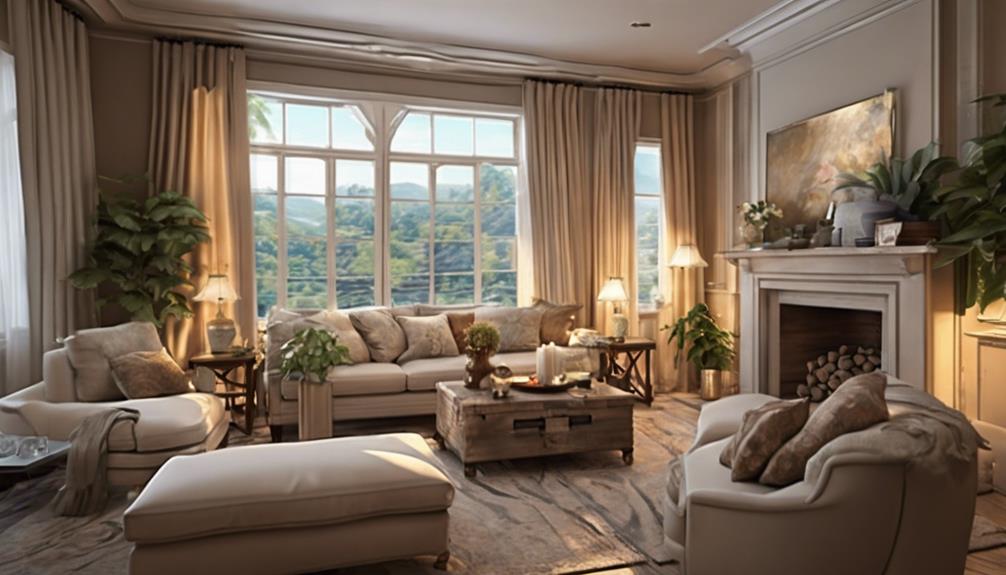
When seeking to create a comfortable and visually soothing home environment, minimizing glare becomes a crucial consideration. Glare from bright sunlight can cause eye strain and discomfort, making it essential to keep the house dark to reduce these effects. Homes with large windows or abundant natural light are especially prone to glare issues, highlighting the importance of managing light levels effectively. By embracing dark interiors, harsh reflections can be minimized, creating a more pleasant ambiance while improving visibility within the space. Dark rooms not only enhance the overall aesthetic but also help individuals focus on tasks without being distracted by excessive lighting.
| Benefits of Minimizing Glare |
|---|
| Reduces eye strain |
| Enhances visual comfort |
| Improves visibility |
| Creates a soothing ambiance |
| Minimizes distractions |
Cooling Effects
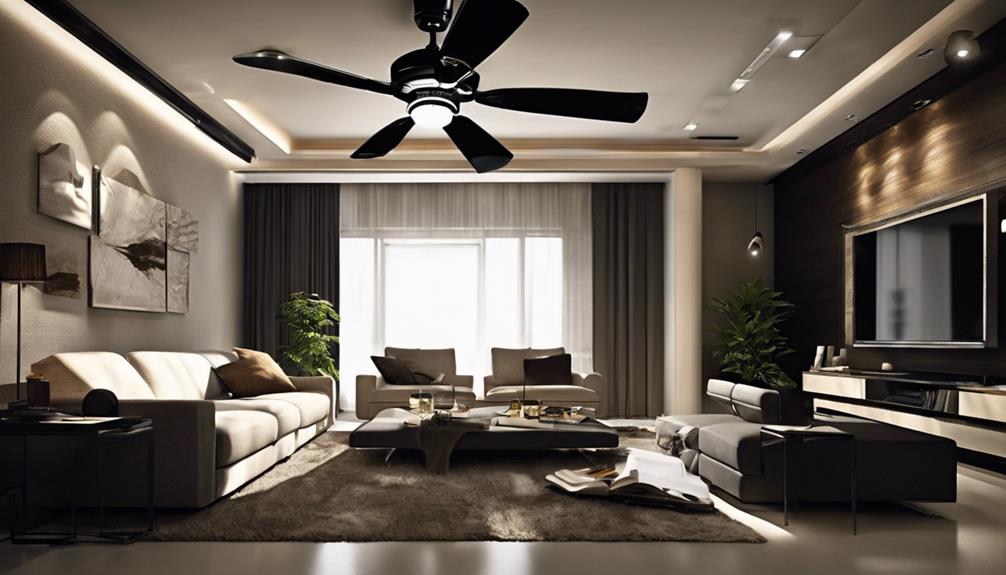
Staying cool in our homes can be effortlessly achieved by incorporating dark interiors that not only enhance aesthetic appeal but also help in reducing the temperature through various design elements. Dark color schemes play a crucial role in creating a comfortable environment during hot weather. Here are some ways dark interiors contribute to cooling effects:
- Less Sunlight Absorption: Dark interiors absorb less sunlight, preventing excessive heat buildup.
- Heat Blockage: Choosing dark curtains or blinds can effectively block out excess heat from entering the house.
- Reduced Light Reflection: Dark walls and decor reduce the reflection of light, helping to keep rooms cooler.
- Cooling Elements: Opting for dark furniture and flooring adds to the overall cooling effect in the house.
Security Purposes

Ensuring the safety of our homes, some individuals choose to keep their houses dark for security purposes. By maintaining a dimly lit exterior, they aim to deter potential intruders and protect their property. Dark houses can give the illusion that nobody is home, reducing the risk of break-ins. Drawing curtains further prevents outsiders from peeking in and spotting valuable items within. This sense of privacy also conceals the interior layout of the home from prying eyes, adding an extra layer of security.
To strike a balance between privacy and visibility, security experts recommend thoughtful lighting choices that enhance safety without compromising on comfort. Below is a table summarizing some key considerations when using darkness as a security measure:
| Security Lighting Tips | Description | Benefits |
|---|---|---|
| Use motion-sensor lights | Activated by movement, these lights startle intruders and alert homeowners to potential threats. | Enhanced security |
| Install timer-controlled lights | Simulate occupancy by setting lights to turn on and off at specific times, giving the appearance of someone being home. | Deterrence of burglars |
| Opt for smart lighting systems | Allow remote control of lights through smartphones, enabling homeowners to adjust settings from anywhere. | Convenience and customization of security measures |
Enhancing Mood
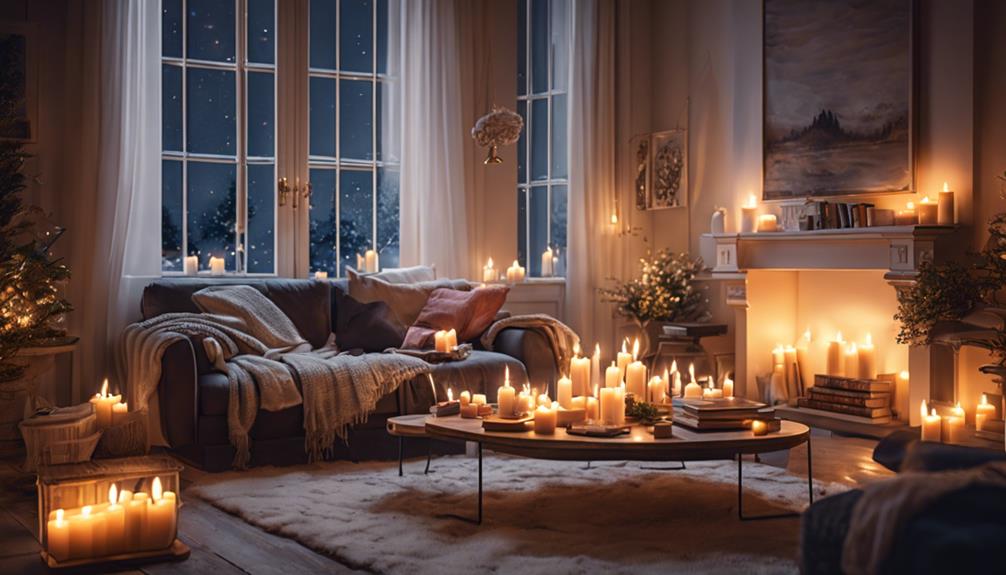
Enhancing the ambiance of a space through dim lighting can significantly impact our mood and emotional well-being. While some may find it unconventional, there are surprising reasons individuals choose to keep their houses dark. Here are a few insights into how dim lighting can enhance mood:
- Comfort and Relaxation: Dark environments have the power to evoke feelings of comfort and relaxation, creating a safe haven within the home.
- Solace and Tranquility: For many, dimly lit spaces offer solace and tranquility, contributing to an improved emotional state and overall well-being.
- Coziness and Security: The coziness and security that dark interiors provide can positively influence mood, making one feel more at ease and content.
- Soothing Ambiance: Dark colors and dim lighting can work together to create a soothing ambiance, promoting a sense of calmness and serenity in the home.
These factors illustrate how personal preferences for low light levels can impact our emotional state in a positive way, allowing us to curate spaces that resonate with our inner selves.
Frequently Asked Questions
Why Do People Keep Their Houses Dark?
We keep our houses dark for various reasons. Light sensitivity, privacy concerns, and a desire for coziness all play a role. Dark environments can provide comfort and security, especially for those dealing with depression.
However, transitioning to a brighter setting could boost mood and well-being. Our living spaces reflect our needs and preferences, whether it's about creating a sanctuary or maintaining a sense of safety and calm.
Why Do I Like My House to Be Dark?
We like our house dark for various reasons. It's a sanctuary, offering comfort and peace. Dark rooms create a cozy atmosphere that helps us unwind and relax.
Our preference for dim lighting is also tied to emotional well-being. Solitude and tranquility are essential for us to recharge and find serenity. The soothing effect of darkness on our mood is undeniable, making our home a haven of calm and quiet.
Why Do Some People Prefer Dark Rooms?
We prefer dark rooms for various reasons. Some find solace in darkness, offering comfort amidst depression. Others seek privacy by keeping curtains drawn, creating a sense of seclusion.
Fear of break-ins drives some to avoid drawing attention to valuables by maintaining a dark home. Migraine sufferers also appreciate the relief from bright lights.
These diverse preferences show how darkness can cater to personal needs and well-being.
Why Do I Prefer Living in the Dark?
We choose to dwell in darkness for reasons that bring us comfort and peace. The dimly lit spaces we inhabit offer solace and relief from the harshness of bright light. Our preference for the shadows stems from a deep desire for emotional tranquility and well-being.
In the dark, we find a haven where our minds can rest and our spirits can thrive. It's in the shadows that we find our true light.
Conclusion
In conclusion, it's fascinating to consider the myriad reasons why people choose to keep their houses dark. Did you know that according to a recent survey, 1 in 5 individuals prefer a dimly lit living space to promote relaxation and create a cozy ambiance?
From psychological comfort to energy conservation, the decision to maintain a dark home is as diverse as the individuals who make it.
Embrace the beauty of darkness and discover the surprising benefits it can offer.
- About the Author
- Latest Posts
Introducing Ron, the home decor aficionado at ByRetreat, whose passion for creating beautiful and inviting spaces is at the heart of his work. With his deep knowledge of home decor and his innate sense of style, Ron brings a wealth of expertise and a keen eye for detail to the ByRetreat team.
Ron’s love for home decor goes beyond aesthetics; he understands that our surroundings play a significant role in our overall well-being and productivity. With this in mind, Ron is dedicated to transforming remote workspaces into havens of comfort, functionality, and beauty.
Architecture Home Styles
How to Have a Tiny Home in Arizona: Your Essential Guide
Fascinated by the idea of a tiny home in Arizona? Discover how tax considerations can impact your journey in this essential guide.
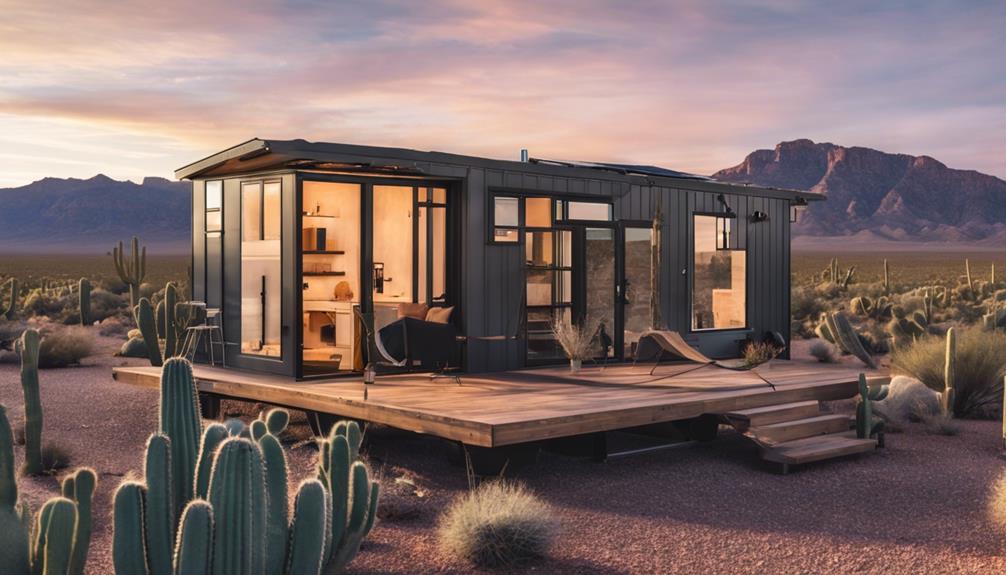
Embarking on the journey of having a tiny home in Arizona is like navigating through a desert oasis, each step revealing new insights and challenges. From understanding the intricate web of zoning laws to discovering the perfect location that aligns with your tiny living dreams, this essential guide equips you with the knowledge needed to turn your tiny home vision into reality.
But what about the unique tax considerations that come with owning a tiny home in Arizona? Stay tuned to uncover key insights that will make a difference in your tiny home journey.
Key Takeaways
- Understand Arizona zoning laws for placement in suitable zones.
- Seek permits for tiny homes based on location and structure type.
- Explore tax benefits for tiny homeowners through property tax exemptions.
- Build a supportive community through local groups and events for guidance.
Zoning Laws and Regulations in Arizona
When navigating the realm of tiny home living in Arizona, understanding the intricacies of zoning laws and regulations becomes paramount. In Arizona, zoning laws permit tiny houses on foundations in multifamily, detached single-family, and accessory dwelling unit zones.
However, for Tiny Homes on Wheels, they're typically classified as recreational vehicles and must adhere to specific parking regulations within designated zones. Maricopa County has established particular regulations for tiny houses, including constraints on the floor area allowed for permanent structures. On the other hand, Pima County imposes restrictions on Tiny Homes on Wheels through specific codes that govern their placement.
The zoning options for tiny houses in Arizona encompass various zones such as isolated single-family zones, accessory dwelling unit zones, and multifamily zones. Familiarizing oneself with these zoning laws and regulations is crucial for anyone considering embarking on the adventure of tiny home living in Arizona.
Ideal Locations for Tiny Homes
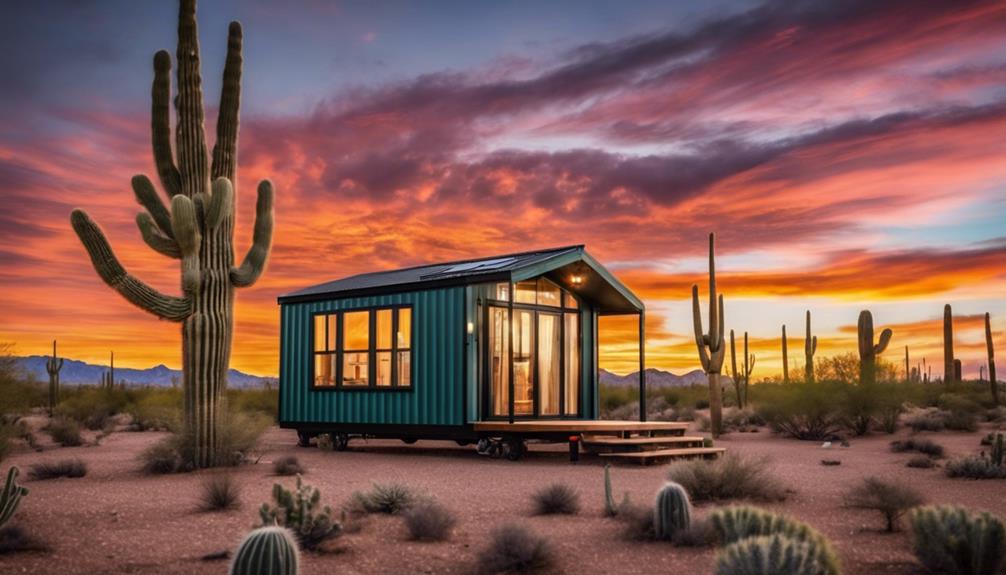
For those seeking ideal locations to establish their tiny homes in Arizona, cities like Phoenix, Tucson, Sedona, and Lakeside present attractive options. When considering where to set up your tiny home in Arizona, keep in mind that Pima County and Coconino County permit the establishment of tiny houses in specific zones. In these areas, tiny homes can be placed in isolated single-family zones, ADU zones, and multifamily zones. For those with tiny houses on wheels, it's important to note that they must be parked in designated R.V. zones in compliance with regulations.
- Phoenix, Tucson, Sedona, and Lakeside are ideal cities for setting up tiny homes in Arizona.
- Pima County and Coconino County allow tiny houses in specific zones.
- Tiny homes can be placed in single-family zones, ADU zones, and multifamily zones.
- Tiny houses on wheels must adhere to regulations in designated R.V. zones.
Tax Considerations for Tiny Home Owners
Exploring the tax implications of owning a tiny home in Arizona reveals potential benefits and considerations that can significantly impact financial planning for homeowners. Tiny home owners in Arizona may qualify for property tax exemptions based on factors like square footage and adherence to green building standards. Additionally, the size of tiny homes could lead to reduced property tax assessments in certain counties. It is crucial for Arizona tiny home owners to familiarize themselves with local tax laws to take advantage of any available tax benefits. Seeking guidance from a tax professional or local tax assessor can provide valuable insights into how owning a tiny home in Arizona may influence property taxes.
Tax Considerations for Tiny Home Owners:
| Key Points | Details | Importance |
|---|---|---|
| Property Tax Exemptions | Available based on square footage and green standards | Maximize Savings |
| Reduced Assessments | Smaller homes could mean lower tax bills | Financial Advantage |
| County Variances | Regulations differ, impacting tax benefits | Local Compliance |
| Professional Advice | Consult with tax professionals for guidance | Optimal Planning |
Finding Community Support in Arizona
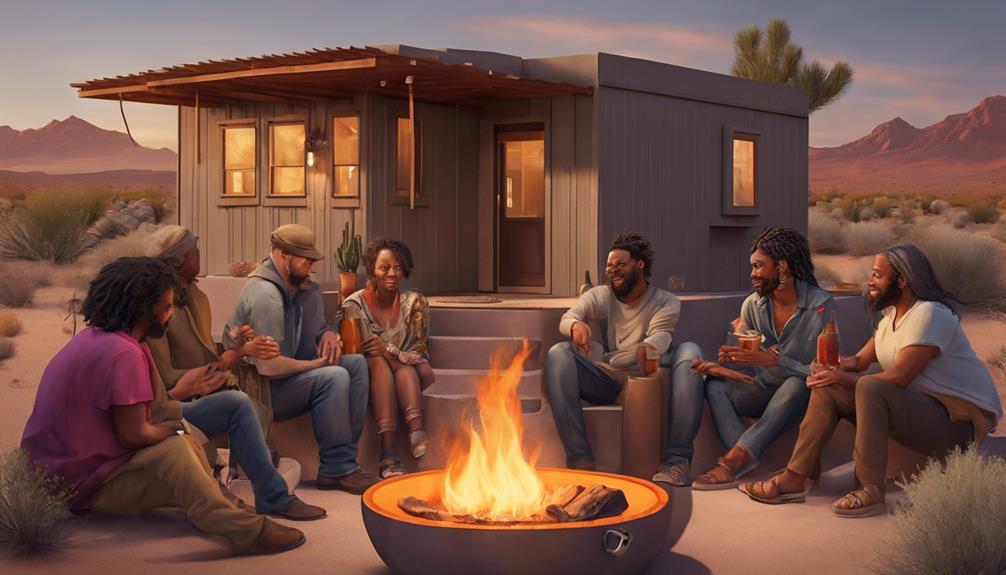
By actively engaging with local resources and networking opportunities, tiny home enthusiasts in Arizona can establish a strong sense of community support to enhance their living experience.
Here are some ways to find community support in Arizona:
- Join local Facebook groups like 'Arizona Tiny House Community' for a supportive network.
- Attend tiny house meetups and events in Arizona to connect with like-minded individuals.
- Explore tiny house workshops and seminars in the state to gain knowledge and resources.
- Consider volunteering with non-profit organizations focused on sustainable living and tiny house advocacy in Arizona.
These opportunities not only provide a sense of belonging within the tiny house community but also offer valuable insights, resources, and support for those embracing the tiny home lifestyle in Arizona.
Engaging with these avenues can enrich your experience, foster connections, and empower you to navigate the challenges and joys of sustainable living in the state.
Building and Parking Tips for Tiny Homes
Engaging with the regulations and guidelines for building and parking tiny homes in Arizona is crucial for ensuring compliance and a smooth transition into sustainable living. Tiny homes on foundations in Arizona must adhere to the 2018 IRC Appendix Q requirements, which outline specific space dimensions and safety features to guarantee structural integrity.
Building a tiny home on skids offers a semi-permanent placement option while still allowing for mobility if relocation becomes necessary. For those opting for tiny homes on wheels, meeting mobile home requirements is essential, and a minimum of 160 square feet is required for parking.
The flexibility in setting up tiny homes in various zone types in Arizona provides diverse housing options based on individual preferences. Tiny houses on wheels are particularly popular for their mobility and flexibility, making them an attractive choice for those desiring a minimalist lifestyle without sacrificing comfort.
Frequently Asked Questions
Can I Put a Tiny House on My Property in Arizona?
Yes, we can put a tiny house on our property in Arizona if it complies with local zoning regulations. Different options like multifamily, detached single-family, or accessory dwelling units are available. Land near Maricopa City, Pinal County, offers accessible placement.
How Much Does a Tiny House Cost in Az?
Tiny houses in Arizona can range from $20,000 to $200,000 depending on size and customization. DIY kits start at $8,000, but labor costs add up. Land, utilities, and permits are extra. Building a tiny house can be a cost-effective housing choice.
What Is the Minimum Square Footage for a House in Arizona?
In Arizona, the minimum square footage for a house varies based on its foundation type. For tiny houses on foundations, it's 200 square feet, while those on trailers require at least 160 square feet. Adhering to building codes is essential.
Does Arizona Have a Tiny Home Community?
We do have tiny home communities in Arizona. These communities provide shared amenities, community engagement, and a supportive environment. Living in a tiny house community offers a unique sense of belonging, shared resources, and a close-knit experience.
Conclusion
In conclusion, navigating the world of tiny homes in Arizona may seem like a daunting task, but with the right resources and community support, it can be a breeze.
From zoning laws to building tips, we've covered it all in our essential guide.
So go ahead, take the leap into tiny home living and watch your dreams of a cozy, sustainable lifestyle come to life in the Grand Canyon State!
- About the Author
- Latest Posts
Introducing Ron, the home decor aficionado at ByRetreat, whose passion for creating beautiful and inviting spaces is at the heart of his work. With his deep knowledge of home decor and his innate sense of style, Ron brings a wealth of expertise and a keen eye for detail to the ByRetreat team.
Ron’s love for home decor goes beyond aesthetics; he understands that our surroundings play a significant role in our overall well-being and productivity. With this in mind, Ron is dedicated to transforming remote workspaces into havens of comfort, functionality, and beauty.
Architecture Home Styles
Exploring the Difference Between Traditional and Classic Design
Kickstart your journey into the world of design by uncovering the subtle yet significant distinctions between traditional and classic styles, shaping your perception of timeless elegance.

When considering traditional versus classic design, we uncover nuanced distinctions in style and aesthetic preferences. The interplay between historical influences and contemporary interpretations provides a fascinating insight into the evolution of design principles.
As we explore the intricate details and subtle nuances that set these two styles apart, it becomes evident that each offers a unique perspective on elegance and sophistication.
Stay tuned to unravel the intricacies that define the essence of traditional and classic design, shedding light on the nuances that shape our perception of timeless aesthetics.
Key Takeaways
- Traditional design features bold colors and intricate patterns, while classic design opts for soft and subdued colors for elegance.
- Both traditional and classic design styles focus on creating a balanced, inviting, and harmonious atmosphere.
- Traditional furniture embodies moderation and balance with solid wood, while classic furniture exudes nobility with gilded finishes.
- Lighting in traditional design aims for warmth and coziness, while classic design creates a luxurious ambiance with ornate fixtures.
Key Elements in Traditional Design
In traditional design, we intricately weave together elements of moderation, elegance, and balance to create a timeless aesthetic inspired by the rich European design traditions of the 18th and 19th centuries. Solid wood plays a pivotal role in this style, exuding warmth and coziness throughout the space. The choice of fabrics like cotton, leather, and velvet further enhances the comfort aspect, inviting you to sink into luxurious textures. Lighting is carefully curated to emanate a soft and inviting glow, achieved through the use of ambient sources such as table lamps and floor lamps, setting a cozy ambiance.
The color palette in traditional design is a symphony of rich colors like deep reds, lush greens, and vibrant yellows, adding depth and character to the space. These hues evoke a sense of opulence and sophistication, harmonizing beautifully with the overall design scheme. The blend of these elements creates a space that not only exudes elegance but also envelops you in a sense of comfort and luxury.
Characteristics of Classic Design

Transitioning from the rich tapestry of traditional design, classic design embodies a timeless allure through its emphasis on neutral hues, enduring furniture pieces, and ageless patterns. Classic design is about creating a space that feels elegant and sophisticated, never going out of style. This style incorporates traditional furniture pieces like wingback chairs and claw-foot tables, showcasing intricate details and a focus on symmetry. Antique or vintage items are often integrated into classic interiors to enhance the sense of heritage and history. Natural materials such as wood and marble play a significant role in classic design, adding a touch of authenticity and luxury. The use of neutral colors like beige, ivory, and taupe creates a serene and calming atmosphere, perfect for those who appreciate a refined aesthetic. Classic design is about capturing the essence of timeless beauty and creating a space that exudes grace and elegance.
| Characteristics | Description | Example |
|---|---|---|
| Neutral Colors | Create a serene atmosphere | Beige, Ivory, Taupe |
| Traditional Furniture | Emphasize heritage and sophistication | Wingback chairs, Claw-foot tables |
| Intricate Details | Showcase fine craftsmanship | Ornate carvings, Embossed patterns |
| Natural Materials | Add authenticity and luxury | Wood, Marble, Leather |
| Timeless Patterns | Enhance the sense of elegance | Damask, Toile, Houndstooth |
Color Palette Variances
Let's delve into the captivating interplay of colors in traditional and classic design, unveiling their distinct palettes and the emotions they evoke within interior spaces.
Traditional design is known for its bold use of color, incorporating rich tones like red, green, and yellow to create a lively and accented color palette. In contrast, classic design opts for a more subdued approach, favoring neutral and soft colors that convey timeless sophistication and elegance. Both styles share a common emphasis on proportion and harmony when selecting colors, ensuring a visually pleasing aesthetic within the space.
Classic design often showcases prestigious materials with subtle contrasts, exuding an air of understated luxury. On the other hand, traditional design tends to embrace vibrant colors and intricate patterns, adding a sense of energy and warmth to the room. The careful selection of color palettes in traditional and classic design plays a vital role in shaping the overall ambiance and character of the interior, showcasing a harmonious blend of elegance, proportion, and timeless sophistication.
Differences in Furniture Styles

Embarking on a journey through the realm of interior design, we are met with a striking divergence in furniture styles between traditional and classic design aesthetics. Traditional furniture in European design, originating from the 18th and 19th centuries, embodies moderation, elegance, and balance. On the other hand, classic furniture exudes noble atmospheres with pomposity, showcasing prestigious materials like oak, mahogany, ceramic, marble, gold, and silver finishes.
| Traditional Furniture | Classic Furniture |
|---|---|
| Rooted in European design | Exudes ethereal nobility |
| Favoring moderation | Prestigious materials |
| Warmth and coziness | Gilded and opulent |
In traditional style, harmony is achieved through blending various elements, offering warmth and coziness with solid wood furniture and fabrics like cotton, leather, and velvet. In contrast, classic style features gilded finishes and gold leaf for a luxurious look, emphasizing richness and opulence. These styles also extend into lighting design, with traditional opting for warmer and softer lighting, creating a cozy feel with ambient lighting solutions like table lamps and floor lamps, while classic style leans towards ornate chandeliers and sconces for a grandiose touch.
Lighting Design Variances
As we delve into the realm of lighting design variances, a captivating interplay emerges between classic and traditional interior styles, each illuminating spaces with unique charm and character. Classic design exudes richness and opulence through lighting fixtures like grand chandeliers and intricately detailed sconces. These ornate details in classic lighting fixtures create a luxurious ambiance, evoking a sense of grandeur and sophistication within a space.
On the other hand, traditional design takes a softer approach, opting for warmer and cozier lighting solutions such as table lamps and floor lamps. The emphasis in traditional design is on creating a welcoming and comfortable environment, where ambient lighting plays a pivotal role in setting the mood. This style aims to promote a sense of intimacy and relaxation, steering away from the grandiose nature of classic design.
Both classic and traditional design styles strive for elegant lighting options that not only serve a functional purpose but also enhance the overall ambiance of a room. Whether it's the opulence of classic chandeliers or the cozy feel of traditional table lamps, lighting design plays a crucial role in shaping the character of a space.
Frequently Asked Questions
How Is Traditional Design Different From Modern Design?
Traditional design differs from modern design in various aspects.
We see traditional design focusing on warmth and rich colors like red and green, while modern design emphasizes sleek lines and minimalism.
Traditional design incorporates natural materials like wood for a cozy atmosphere, whereas modern design utilizes innovative materials for a contemporary look.
The former favors classic furniture with intricate details, while the latter features unique furniture and cutting-edge designs.
What Is the Definition of Traditional Design?
When it comes to traditional design, it's like stepping into a cozy retreat filled with elegant charm. Rich colors like red, green, and yellow dance together, creating a lively palette.
Classic lines and solid wood furniture greet you warmly, while fabrics like cotton and velvet whisper comfort and luxury. It's a timeless style that wraps you in a familiar embrace, making every corner of your home feel like a cherished memory.
What Is the Difference Between Modern Design and Classic Design?
When it comes to modern design and classic design, the distinction lies in their contrasting aesthetics.
Modern design embodies sleek lines and cutting-edge materials, reflecting a contemporary and innovative vibe.
In contrast, classic design exudes elegance and timeless sophistication with its traditional furniture and luxurious details.
These two styles offer a unique blend of old-world charm and futuristic elements, catering to different tastes and preferences in the world of design.
What Is the Difference Between Modern and Classic Home Design?
When it comes to modern and classic home design, the distinction lies in their essence.
Modern design embodies innovation and creativity with sleek lines and cutting-edge materials, ideal for those seeking a contemporary aesthetic.
Classic design, on the other hand, exudes elegance and sophistication through timeless pieces and intricate details, appealing to those who value tradition and refinement in their living spaces.
These contrasting styles offer unique choices for expressing personal taste and style preferences.
Conclusion
As we wrap up our exploration of traditional and classic design, it's clear that these styles offer unique and distinct characteristics. From the cozy warmth of traditional design to the timeless elegance of classic design, each style brings its own charm and sophistication to any space.
Whether you prefer the rich colors and intricate details of traditional design or the opulent finishes and neutral palettes of classic design, there's no doubt that both styles can create a truly stunning and inviting atmosphere.
So, which style speaks to you?
- About the Author
- Latest Posts
Introducing Ron, the home decor aficionado at ByRetreat, whose passion for creating beautiful and inviting spaces is at the heart of his work. With his deep knowledge of home decor and his innate sense of style, Ron brings a wealth of expertise and a keen eye for detail to the ByRetreat team.
Ron’s love for home decor goes beyond aesthetics; he understands that our surroundings play a significant role in our overall well-being and productivity. With this in mind, Ron is dedicated to transforming remote workspaces into havens of comfort, functionality, and beauty.
Architecture Home Styles
How to Explore Native Houses in Indonesia
Catch a glimpse of Indonesia's cultural treasures through native houses, where each intricate detail holds a secret waiting to be discovered.

So, you think you've seen it all in Indonesia? Well, think again. Exploring native houses in this diverse archipelago offers a glimpse into a world where tradition meets craftsmanship in a harmonious blend.
From the intricate carvings to the unique architectural designs, each house tells a story waiting to be uncovered, inviting us to step into a realm where time seems to stand still.
But what lies beyond the façade of these cultural gems is a journey that promises to unravel the tapestry of Indonesia's rich heritage, revealing a side often overlooked by many travelers.
Key Takeaways
- Visit Batak, Toraja, and Joglo Houses for diverse architectural experiences.
- Discover intricate carvings and symbolic details in traditional Indonesian homes.
- Immerse in cultural heritage through communal spaces and ancient craftsmanship.
- Learn about Indonesia's rich history and values by exploring native houses.
Traditional Houses in Indonesia
In Indonesia, traditional houses embody rich cultural heritage through their unique architectural designs and symbolism. Among these remarkable dwellings, the boat-shaped houses stand out for their distinctive characteristics. The Batak House, found in certain regions, showcases intricate carvings and utilizes natural materials, reflecting a deep connection to the environment. These boat-shaped structures not only serve as homes but also as symbols of cultural identity and traditions passed down through generations.
The boat-shaped design of these traditional houses in Indonesia not only provides shelter but also represents a deeper meaning within the community. The intricate carvings on the Batak House, for example, tell stories of ancestry and spiritual beliefs, adding layers of significance to the architectural aesthetics. Through these boat-shaped dwellings, the indigenous peoples of Indonesia honor their heritage and preserve their cultural roots in a rapidly changing world.
Cultural Significance of Indigenous Dwellings

Exploring the intricate cultural significances embedded within indigenous dwellings in Indonesia unveils a tapestry of architectural symbolism and traditional values that resonate deeply within the communities they inhabit. These houses serve as more than mere shelters; they embody the cultural beliefs and practices of the diverse Indonesian tribes. The multi-generational living arrangements seen in houses like the Rumah Gadang in West Sumatra and the Rong Houses in Dayak communities highlight the importance of family and community ties in Indonesian society.
Moreover, the communal living spaces found in the Tongkonan House in Tana Toraja and the Uma Lulik in Timor foster a sense of togetherness and shared responsibilities among the inhabitants. Each architectural element, from the intricate carvings to the circular shapes and elevated stilts, holds deep symbolic meaning rooted in centuries-old traditions. These indigenous dwellings aren't just physical structures but living embodiments of Indonesia's rich cultural heritage, where every beam and wall tells a story of cultural continuity and communal harmony.
Top Native Houses to Visit
With intricate architectural designs and rich cultural symbolism, a journey to explore the top native houses in Indonesia promises a captivating immersion into the country's diverse heritage. Here are some of the top native houses you shouldn't miss:
| Native House | Features |
|---|---|
| Batak Houses | Boat-shaped roofs, intricate carvings, spaces for daily life activities like a living room and dining room. |
| Toraja Houses | Distinct saddleback roof design, used in ceremonies, areas for daily life such as a living room and dining room. |
| Joglo Houses | Elaborate wooden structures, symbolizing social hierarchy, with designated spaces for a living room and dining room. |
These native houses offer insights into the daily lives of the people inhabiting them. From the communal spaces like the living room where gatherings take place to the dining room where meals are shared, each house reflects the cultural practices and traditions of its respective community. Exploring these spaces provides a unique opportunity to understand the interconnectedness between architecture, daily life, and cultural identity in Indonesia.
Exploring Architectural Features

Amidst the vibrant tapestry of Indonesia's architectural landscape, one encounters a rich mosaic of cultural intricacies within the native houses that stand as living testaments to the country's diverse heritage. As we delve into exploring the architectural features of these remarkable dwellings, we're greeted by a fusion of craftsmanship and symbolism that captivates the senses:
- Boat-shaped roofs that gracefully mimic the curves of traditional Indonesian vessels, offering a nod to the nation's maritime history.
- Intricate carvings adorning the facades and interiors, telling stories of myths, legends, and ancestral wisdom.
- Wooden craftsmanship that showcases the mastery of artisans, each piece meticulously crafted to perfection.
- Natural materials seamlessly integrated into the structures, connecting the homes to the earth and reflecting a harmonious relationship with nature.
- Symbolic details embedded in every corner, from the layout to the decorations, embodying cultural beliefs and societal values passed down through generations.
Exploring these architectural marvels unveils a world where history, artistry, and tradition converge in a celebration of Indonesia's rich cultural heritage.
Immersing in Indonesian Hospitality
Immerse yourself in the captivating tapestry of traditional Indonesian hospitality by residing in native houses like the Batak House in North Sumatra or the Rumah Gadang in West Sumatra. These native houses not only offer a place to stay but also provide a gateway to the cultural heritage of Indonesia. The intricate carvings, boat-shaped roofs, and eco-friendly construction of these houses showcase the deep-rooted traditions and craftsmanship of the local communities.
Here is a table highlighting some of the unique aspects of traditional Indonesian hospitality found in native houses:
| Aspect | Description |
|---|---|
| Architectural Features | Intricate carvings, boat-shaped roofs |
| Social Significance | Symbolism of social hierarchy in houses like the Joglo House in Central Java |
| Eco-Friendly Construction | Use of sustainable materials like bamboo and thatch in houses like the Sasak House in Lombok |
| Spiritual Connections | Preservation of spiritual connections and communal living traditions in houses like the Uma Lulik in Timor or the Honai House in Papua |
| Local Way of Life | Experience the daily lives and customs of the local communities while staying in these native houses |
Staying in these native houses will not only provide you with a unique accommodation experience but also a deep dive into the rich tapestry of Indonesian traditions and hospitality.
Frequently Asked Questions
What Are Traditional Indonesian Houses Called?
Traditional Indonesian houses are called 'Rumah Adat.' These structures are more than just dwellings; they're living representations of Indonesia's rich cultural tapestry. Crafted from natural materials like wood and thatch, they stand as testaments to the country's diverse traditions.
Each region boasts its own unique design, influenced by local customs and beliefs. Exploring these native houses allows us to delve into the heart of Indonesia's vibrant heritage and architectural ingenuity.
What Is Indonesian Housing Like?
Indonesian housing embodies a rich tapestry of cultures and traditions, showcasing unique architecture and sustainable practices. From boat-shaped roofs to intricate carvings, these homes reflect a deep connection to nature and community.
Families often live together in multi-story structures, fostering bonds and kinship. Sustainability and cultural symbolism intertwine in Indonesian homes, creating a harmonious blend of functionality and heritage preservation.
Each dwelling tells a story of tradition, innovation, and unity.
What Is Typical Indonesian Housing?
We'll dive into the essence of typical Indonesian housing, showcasing the diverse array of styles like Batak, Toraja, Joglo, and more. These houses boast unique architectural features, reflecting the rich heritage of Indonesia's indigenous communities.
From intricate carvings to bamboo and thatch construction, each house tells a story of cultural significance and tradition. Multi-generational living arrangements further deepen the bond between people, highlighting the social and spiritual connections within the community.
What Is a House Called in Indonesia?
In Indonesia, a house is often referred to as a 'rumah' in Bahasa Indonesia. These structures aren't merely places of dwelling; they embody the essence of Indonesian culture and heritage.
Each region has its unique names for traditional houses, such as 'rumah adat' or 'rumah suku,' showcasing the diverse architectural styles and craftsmanship.
These homes serve as living monuments, reflecting the country's history, beliefs, and social structure.
Conclusion
In conclusion, exploring native houses in Indonesia is like taking a journey through a living museum of cultural heritage. Each traditional dwelling tells a story of the past and present, showcasing the craftsmanship and traditions of its people.
By immersing ourselves in these architectural wonders, we can truly appreciate the beauty and diversity of Indonesia's indigenous cultures. So, let's hit the road and dive into the rich tapestry of Indonesian history – the world is our oyster!
- About the Author
- Latest Posts
Introducing Ron, the home decor aficionado at ByRetreat, whose passion for creating beautiful and inviting spaces is at the heart of his work. With his deep knowledge of home decor and his innate sense of style, Ron brings a wealth of expertise and a keen eye for detail to the ByRetreat team.
Ron’s love for home decor goes beyond aesthetics; he understands that our surroundings play a significant role in our overall well-being and productivity. With this in mind, Ron is dedicated to transforming remote workspaces into havens of comfort, functionality, and beauty.
-

 Vetted4 weeks ago
Vetted4 weeks ago15 Best Contact Paper for Kitchen Cabinets to Elevate Your Home Decor
-

 Vetted2 weeks ago
Vetted2 weeks ago15 Best Poe Cameras for Home Security – Reviews & Buying Guide
-

 Vetted3 weeks ago
Vetted3 weeks ago15 Best Drain Snakes to Unclog Your Pipes Like a Pro
-

 Beginners Guides5 days ago
Beginners Guides5 days agoI Inhaled Vinegar Fumes
-

 Vetted4 weeks ago
Vetted4 weeks ago14 Best Stationery Brands for Your Next Writing Adventure
-

 Beginners Guides2 weeks ago
Beginners Guides2 weeks agoSwinger Porch Light Color
-

 Mardi Gras Decoration4 weeks ago
Mardi Gras Decoration4 weeks agoWhy Does Hobby Lobby Not Do Mardi Gras?
-

 Vetted2 weeks ago
Vetted2 weeks ago15 Best Blinds for Bathroom Windows to Enhance Privacy and Style



















